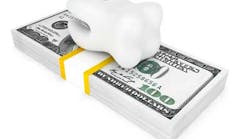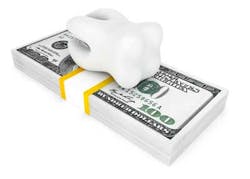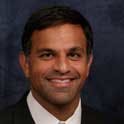We all understand that dentists are health-care practitioners. Dentists are experts in oral health, and we deliver care to patients ranging from education to cleanings and restorations. Dental schools are great at teaching us how to be health-care providers. After dental school, dentists have access to great continuing education opportunities that help further our clinical skills.
Unfortunately, the clinical side of dentistry is only half of what we do. Dentists and dental practices are small corporations. To be successful, we must not only have great clinical skills, but we must also understand the business sideof dentistry.
Traditionally, we dentists have wanted to start our own practices. Most of us like the opportunity to practice with our own vision. Being a 43-year-old practitioner, I’ve seen changes to the business side of dentistry. My childhood dentist started his practice by asking the banker for money, setting up his practice, hanging out his shingle, and waiting for patients to come to his office. In our current economy, financing is not as easy, competition for patients is higher, and management of a practice’s cash flow is particularly important.
When starting a practice, we have to understand the costs and determine how we’re going to pay for those costs. The average new practice requires $500,000 cash for structural upfit, equipment, and supplies. In order to finance this, a doctor has to have a strong balance sheet and display the ability to repay the bank. Practice loans range from seven to 12 years. At current rates of 5%, borrowing $500,000 will cost a dentist $7,067 for a seven-year term, $5,303 for a 10-year term, or $4,625 for a 12-year term.
Taking into account practice overhead, it will take monthly collections of $21,200, $16,000, or $14,000 respectively to cover the debt service. The crazy thing about overhead calculation is that it does not include owner compensation. It’s safe to say that we would all like to earn a living doing this.
Many dental lenders will offer an interest-only period of six to 12 months at the beginning of a loan in order to help the startup practitioner. This allows the doctor to have lower payments for the initial period of the loan. The negative to this is that it does reduce the term that the principal is repaid. For example, if you have a seven-year term and the first 12 months are interest-only, the interest-only payments will be $2,083. However, the principal will now be repaid during years two to seven, which is now a six-year term. The principal and interest payment now becomes $8,052 vs. the $7,067 mentioned above.
In my opinion, we have to be savvy businesspeople to control our costs, handle debt service, and make a living. Many people will tell you the easiest way to do this is to have a high level of production. If the business of dentistry were magic, then we could all have this high production. As the clinician and CFO of our practice, we have to manage the things that we can control. We have to start by being lean in our staffing. Staff costs are the largest expenditure for practices. We must hire only essential personnel and pay them a reasonable wage.
We should also look at controlling our supply expenses and bank fees. If an average dentist spends $50,000 annually on clinical supplies and $10,000 on credit card processing fees, the ability to save on these costs by using a different mindset can have a tangible effect on the profitability of a practice.
The dental supply industry is very fragmented. It has largely been composed of full-service distributors sending field sales reps into dentists’ offices to sell them supplies. Today’s technology now allows for increased access to a variety of supply channels. This has led to the rise of the Dental Group Purchasing Organization (GPO). GPOs have been prevalent in medicine for years. Several years ago, I founded the Synergy Dental Partners. Synergy is one of the first and largest practitioner owned and operated GPOs in the dental space.
By leveraging the buying power of members in 40 states, we are able to create a cost savings opportunity for members. If dentists can save $10,000 to $15,000 annually on the supplies they currently use, the doctor can use this to cover debt service, cover part of an employee’s salary, or increase his or her compensation. Additionally, credit card processing is another simple way to save 38%, or an average of $4,022 on annual processing expenses.
Understanding the financial side of dentistry is key to a successful practice. Understanding what your financing will cost and selecting the correct terms are also extremely important. Managing expenses without sacrificing quality is a key aspect that can save a practice anywhere from $15,000 to $100,000 annually. Being a financially savvy dental CFO for your small business is just as important as being the best clinician. Having sound clinical and operational building blocks for your practice will create the opportunity for you to achieve the financial independence that dentists hope for.
What are YOUR experiences with starting a new dental practice? Dr. Shah-Khan and DentistryIQ readers would love to hear your success stories, and your not-so-successful stories. Please feel free to join the conversation on DIQ's Facebook page, or add comments after this article. Sharing ideas is what it's all about!
Dr. Mustafa Shah-Khan is a graduate of the University of North Carolina and the University of North Carolina School of Dentistry. He has served on the Board of Directors of The University of North Carolina School of Dentistry, as well as the Charlotte Dental Society. Dr. Shah-Khan is also the CEO and founder of The Synergy Dental Partners. He maintains a private practice emphasizing cosmetic reconstructive dentistry in Charlotte, N.C.







